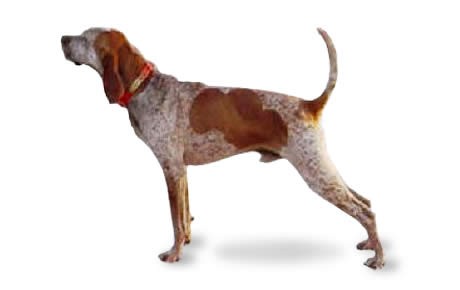American English Coonhound Breed Guide

Breed Group:
Hound Dogs
Get 30% off
Join our Newsletter
Sign Up Today
American English Coonhound Background Info and History
The American English Coonhound dates back to decades before the American Revolution. It is believed that some of the early storied settlers of the colonies, including George Washington, brought their English scent hounds with them on their journey across the Atlantic.
These early settlers began breeding the English stock with other hounds, eventually creating what is known today as the American English Coonhound. The dog breed was particularly suited to the rugged, untamed landscape of colonial America.
American English Coonhound Temperament and Personality
American English Coonhounds are known as a mellow, sociable breed that gets along well with strangers. These hounds are incredibly loyal to their family, and quickly become loving members throughout their life. On the hunt, however, the American English Coonhound is a tenacious breed that will doggedly track prey for as long as it takes.
Training an American English Coonhound
The American English Coonhound is an intelligent breed that can quickly pick up new commands. They should be trained and socialized from a young age. However, be warned that this breed can quickly become distracted by scents, as their strong desire to track prey will often override all other commands.
Exercise Needs of American English Coonhounds
The American English Coonhound was bred to hunt and chase down prey over long distances. If you aren’t using your Coonhound to hunt, expect to provide him with lots of exercise. A daily jog or long walk, combined with a vigorous play session is highly recommended.
Life Span of American English Coonhounds
This large sized breed is relatively healthy and lives on average from 10-12 years.
American English Coonhound Breed Popularity
The American English Coonhound is currently the 170th most popular AKC registered breed. Their relatively low level of popularity probably has much to do with the decline in sport hunting, their unsuitability for apartment dwelling, and their need for a large amount of exercise. However, don’t let these facts discourage you. For the right family, the American English Coonhound can be a great companion.
Feeding Requirements of American English Coonhounds
As a large-sized, active breed, the American English Coonhound will need to be fed a high-quality diet. For an average sized American English Coonhound weighing 60lbs, expect to feed them 2 ½ to 3 cups of dry food a day, split into two meals. Avoid any foods that contain grain fillers.
Grooming American English Coonhounds
The American English Coonhound is a breeze to keep groomed. Their short hair only needs occasional brushing. During coat grooming, be sure to check your pups nails and eyes for any signs of potential damage. Also pay particular attention to your dog’s ears, as this breed is prone to developing ear infections.
Are American English Coonhounds Good With Kids?
The American English Coonhound is exceptionally gentle and loving with children and will make a great family dog. They are large enough to withstand any accidental injury by children but moderately sized enough to not inadvertently hurt any child they are playing with.
Health Problems of American English Coonhounds
Hip Dysplasia
Hip dysplasia in dogs is a condition that affects a number of large dog breeds, including the American English Coonhound. This condition is caused by a loose fit between the bones of the femur and pelvic girdle. Over time, this loose fit causes the cartilage to wear out unevenly. This painful condition gradually results in arthritis, bone spurs, and eventually canine lameness in the hind legs.
Ear Infections
The American English Coonhound is particularly prone to developing canine ear infections due to their distinctive large and floppy ears. These ears don’t allow adequate air to flow in and around the ears, resulting in a buildup of moisture and bacteria.
Catching an ear infection early will result in the best prognosis, so be aware of the symptoms and check your Coonhound regularly. Ear infections will typically result in a yellow or brownish discharge around the ear, it may give off a distinct odor, and you may notice your Coonhound shaking his head or scratching at his ear repeatedly.
Progressive Retinal Atrophy (PRA)
PRA is a degenerative disease that affects the retina in certain breeds of dogs. The retina of the eye contains photoreceptor cells that are responsible for the eye’s ability to receive and perceive light. PRA causes these important cells to deteriorate over time.
The most common early sign of PRA is a diminished ability to distinguish objects in low or dim light, such as at dawn or dusk. Over time, PRA progresses to full loss of vision in dogs. PRA is a hereditary disease, so be sure to inquire with your breeder to find out if PRA has ever appeared in your dog’s line.





